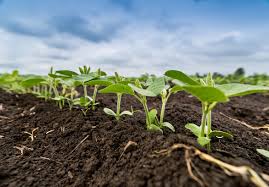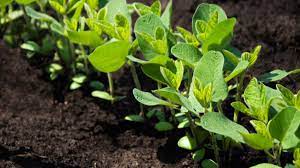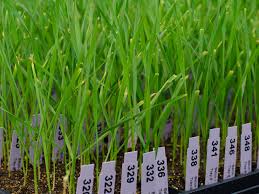Roles and Benefits of Legumes in the Soil
Legumes could play an important role in food security and lowering the risk of climate change by delivering multiple services in line with sustainability principles.
In addition to serving as fundamental, worldwide source of high-quality food and feed, legume crops contribute to reduce the emission of greenhouse gases, as they release 5–7 times less GHG per unit area compared with other crops; allow the sequestration of carbon in soils with values estimated from 7.21 g kg−1 DM, 23.6 versus 21.8 g C kg—1 year; and induce a saving of fossil energy inputs in the system thanks to N fertilizer reduction, corresponding to 277 kg ha−1 of CO2 per year.
Legumes could also be competitive crops and, due to their environmental and socioeconomic benefits, could be introduced in modern cropping systems to increase crop diversity and reduce use of external inputs.
They also perform well in conservation systems, intercropping systems, which are very important in developing countries as well as in low-input and low-yield farming systems.
Legumes fix the atmospheric nitrogen, release in the soil high-quality organic matter and facilitate soil nutrients’ circulation and water retention.
Based on these multiple functions, legume crops have high potential for conservation agriculture, being functional either as growing crop or as crop residue.
Some legumes have the ability to solubilize otherwise unavailable phosphate by excreting organic acids from their roots, in addition to improving soil fertility. Legumes also help to restore soil organic matter and reduce pest and disease problems when used in rotation with non- leguminous crops.
Nodulation in the Legume Family (the Leguminosae)
The Leguminosae contains roughly 19,000 species that are classified into three sub-families: the Caesalpiniodeae, the Mimosoideae and the Papilionoideae. The Caesalpiniodeae is considered to be the oldest and ancestral subfamily from which the other sub-families diverged.
The vast majority of legumes in the Mimosoideae and the Papilionoideae are able to form root nodules and fix N2 gas, but only a quarter of the caesalpiniod legume species can nodulate and fi x N2.
One well-known example of a N2-fixing caesalpiniod legume is the forage legume, Wynn cassia (Chamaecristarotundifolia).
Some non-nodulating legumes are widely planted as ornamentals (e.g. Bauhinia spp., Delonix regia) or are used as agroforestry trees (e.g. Senna siamea, Senna spectabilis) as they grow fast and provide shade and fuelwood. Under some circumstances Sennaspp. have been observed to be suitable for rehabilitation of degraded soils. In Benin, the deep rooting of S. siamea allowed it to recover nutrients from
Challenges of the Legume Crop
Legumes are often women’s crops, grown for home consumption. They are often grown in poorer soils with little application of fertilizers or manure, and with less attention in terms of labour for crop management.
This means that environment and management often override the potential of the legume–rhizobium symbiosis for N2-fixation. In such circumstances, opportunities need to be sought for including legumes in rotation with other crops such as cereals that receive fertilizer so that the legume can benefit from the residual nutrients in the soil.
Where there are market opportunities for grain legumes, direct use of basal fertilizer on legumes may be appropriate and necessary to achieve good yields. The nutrient most commonly required by legumes is P, but increasingly deficiencies of K and other nutrients are observed in the field.
The Need for Inoculation with Rhizobia
Legumes vary widely in their ability to form root nodules with ‘indigenous’ rhizobia – i.e. compatible rhizobia commonly found in the soils where the legumes are grown:
Soybean (G. max) and chickpea (Cicerarietinum) nodulate with a restricted number of rhizobial strains or species and are thus considered as ‘specifi c’ in their rhizobia requirement.
Cowpea (V.unguiculata) is considered the most promiscuous (non-specific or naturally nodulating) of the grain legumes, and nodulates with a wide range of rhizobia found in many soils.
In nature there is a huge range of promiscuity and specificity, but the most common state is for legumes to be promiscuous in nodulation with indigenous strains in the soil.
Thus grain legumes such as cowpea and groundnut, and the vast majority of fodder, green manure and tree legumes do not need to be inoculated with rhizobia.
Legumes that have a specific requirement for rhizobia, particularly soybean and chickpea, need inoculation. Rhizobial inoculants are applied on the seed at planting.
Most rhizobial inoculants are used with soybean, and on poor soils they can make the difference between crop success and failure. Most varieties of soybean are specific in their requirement for rhizobia and need to be inoculated to get good yields.
Newer (and some old) soybean varieties are promiscuous in their nodulation, but although they can form nodules and fix N2 with indigenous rhizobia, inoculation still often increases their yield by up to 20%.
Although little research has been done on inoculation with chickpea in Africa, the available evidence suggests that this crop responds strongly to rhizobial inoculants.
The situation with common bean (P.vulgaris) is less clear – most experimental results indicate small and highly sporadic responses to inoculants, though some scientists recommend inoculation with rhizobia.
Three situations occur where legumes generally do need inoculation:
Where compatible rhizobia are absent from the soil;
Where the population of compatible rhizobia is small; and
Where the indigenous rhizobia are less effective in fixing N2 with the legume compared with selected inoculant strains.
Although inoculation may give increased yields in the first season with newly introduced legumes where they have never been previously grown, some compatible rhizobia are often present.
These rhizobia will multiply in the rhizosphere of a compatible host so that the population builds up and inoculation is not essential in subsequent seasons.
If inoculants are available they are not costly compared with other production inputs like fertilizer, so that using inoculants is preferable to risking a loss in yield.
New research with high-quality inoculants indicates that yield gains through inoculation could be possible even with the most promiscuous legumes in the longer term.
Legume Contributions
Biological N2-fixation can contribute as much as 300 kg N/ha in a season in grain legumes or legume green manures and exceptionally as much as 600 kg N/ha in a year in tree legumes. But where constraints such as drought or deficiencies in P or K limit legume productivity, inputs from N2-fixation are also reduced.
The contribution of legumes to soil fertility depends on the amount of N2-fixed in relation to the amount of N taken from the field at harvest time. Legumes grown for soil fertility improvement, such as green manures or agroforestry trees, add the largest amount of N as little is removed.
There are large differences between grain legumes in the amounts of N returned to the soil. In general the greater the biomass produced, the larger the inputs from N2-fixation – so the multi-purpose soybean varieties, or the creeping varieties of groundnut and cowpea leave behind the most N.
Benefits of Legumes
1. Grain legumes impacts on atmosphere and soil quality
Among the many important benefits that legumes deliver to society, their role in contributing to climate change mitigation has been rarely addressed.
Legumes can;
(1) Lower the emission of greenhouse gases (GHG) such as carbon dioxide (CO2) and nitrous oxide (N2O) compared with agricultural systems based on mineral N fertilization,
(2) Have an important role in the sequestration of carbon in soils, and (3) reduce the overall fossil energy inputs in the system.
Greenhouse gas emissions: The introduction of legumes into agricultural rotations help in reducing the use of fertilizers and energy in arable systems and consequently lowering the GHG emissions
2. Improves Soil Properties
Cultivation and cropping may cause significant soil organic carbon losses through decomposition of humus. Shifting from pasture to cropping systems may result in loss of soil C stocks between 25 and 43%.
Read Also : Maintenance of Soil Nutrient Guide
Legume-based systems improve several aspects of soil fertility, such as SOC and humus content, N and P availability. With respect to SOC, grain legumes can increase it in several ways, by supplying biomass, organic C, and N, as well as releasing hydrogen gas as by- product of BNF, which promotes bacterial legume nodules’ development in the rhizosphere.
In sandy soils, the beneficial effect of grain legumes after three years of study was registered in terms of higher content of SOC compared with soils with oats (7.21 g kg−1 DM, on average).
Specifically, cultivation of pea exerted the most positive action to organic carbon content (7.58 g kg−1 , after harvest, on average), whereas narrow-leaved lupin had the least effect (7.23 g kg−1 , on average) [30].
In southern America (Argentina), the intercropping of soybean with maize at different rates favoured a SOC accumulation of 23.6 g C kg−1 versus 21.8 g C kg—1 of the sole maize; the greatest potential for enhancing SOC stocks occurred in the 2:3 (maize:soybean) intercrop configuration. Furthermore, just only amending the soil with soybean residues allows to obtain an increase of 38.5% in SOC.
Role of Grain Legumes in Cropping Systems

Legumes could be competitive crops, in terms of environmental and socioeconomic benefits, with potential to be introduced in modern cropping systems, which are characterized by a decreasing crop diversity and an excessive use of external inputs (i.e. fertilizers and agrochemicals).
Grain legumes into crop-sequences: In the recent years, many studies have focused on the sustainable re-introduction of grain legumes into crop rotations, based on their positive effects on yield and quality characteristics on subsequent crops.
However, assessment of the rotational advantages/ disadvantages should be based on a pairwise comparison between legume and non-legume pre-crops.
Some experimental designs involving multi-year and multispecies rotations do not provide information on yield benefits to the subsequent species in the rotation sequence.
Therefore, it is difficult to formulate adequate conclusions. The agronomic pre-crop benefits of grain legumes can be divided into a ‘nitrogen effect’ component and ‘break crop effect’ component.
The ‘nitrogen effect’ component is a result of the N provision from BN, which is highest in situations of low N fertilization to subsequent crop cycles.
The second one (break crop effect) includes non-legume-specific benefits, such as improvements of soil organic matter and structure, phosphorus mobilization, soil water retention and availability, and reduced pressure from diseases and weeds. In this case, benefits are highest in cereal-dominated rotations.
Grain legumes in inter cropping: Intercropping systems consist in simultaneous growth of two or more crop species on the same area and at the same time. Intercropping is widely used in developing countries or in low-input and low-yield farming systems.
Despite several recognized beneficial aspects of intercropping such as better pest control, competitive yields with reduced inputs, pollution mitigation, more stable aggregate food or forage yields per unit area, there are a number of constrains that make intercropping not common in modern agriculture, such as example the request of a single and standardized product and the suitability for mechanization or use of other inputs as a prerogative in intensive farming system.
It is therefore necessary to optimize intercropping systems to enhance resource-use efficiency and crop yield simultaneously, while also promoting multiple ecosystem services.
Most recent research has focalized on the potential of intercropping in sustainable productions and in particular on grain legumes that can fix N2 through biological mechanisms (BNF).
Indeed, legumes are pivotal in many intercropping systems, and of the top 10 most frequently used intercrop species, seven are legumes.
Grain Legumes and Conservation Agriculture
Legumes have some characteristics particularly suitable for sustainable cropping systems and conservation agriculture, and making them functional either as growing crop or as crop residue.
Conservation agriculture is based on minimal soil disturbance and permanent soil cover combined with rotations. As previously described, major advantages of legumes include the amount of nitrogen fixed into the soil and the high quality of the organic matter released to the soil in term of C/N ratio.
Some legume species have also deep root systems, which facilitate nutrients solubilisation by root exudates and their uptake/recycling as well as water infiltration in deeper soil layers. Many countries already rely on conservation agriculture.
Brazil has implemented conservation agriculture systems using soybean as legume crop. Grain legumes like lentil, chickpea, pea and faba bean play a major role in conservation agriculture in North America, Australia, and Turkey.
In Australia, some advantages of minimum tillage for grain legumes have been quantified for water limited environments. Some studies indicate that the majority of grain-legumes producers use direct seeding after a legume pre-crop.
This change from conventional tillage (CT) to reduce or no tillage (NT) systems (with at least 30% of the soil surface covered) would lead to significant positive impacts on SOC.
In contrast, other results indicate that such positive effects are limited to the first 20 cm depth, while little or no difference between CT and NT in total SOC can be seen lower down the soil profile.
In conclusion, the roles and importance of grain legumes in a context of sustainability in agriculture could be enhanced by the emerging research opportunities for the major topics discussed above.
A major task in the future will be the selection of legume species and cultivars which could be effectively introduced across different cropping systems. An important point concerns balancing yield, which gives economic return, with the environmental and agronomic benefits. Some priority areas seem emerge.
Nitrogen fixation activity of grain legumes should be evaluated in relation with soil, climatic, plant characteristics and management conditions to find the suitable approach to achieve the best improvements. With this respect, the ability of the host plant to store fixed nitrogen appears to be a major component of increasing nitrogen fixation input.
A particular focus should be paid also to the study of abiotic stress limitations and in particular water deficit, salinity and thermal shocks require extensive investigation.
Legumes that can recover unavailable forms of soil phosphorus could be major assets in future cropping systems.
Consequently, those legumes which are able to accumulate phosphorus from forms normally unavailable need to be further studied, since phosphorus represents an expensive and limiting resource in several cropping systems.
Grain legumes have beneficial impacts on atmosphere and soil quality. Among the many important benefits that legumes deliver to society, they also play significant role in climate change mitigation.
Legumes can;
(1) Lower the emission of greenhouse gases (GHG) such as carbon dioxide (CO2) and nitrous oxide (N2O) compared with agricultural systems based on mineral N fertilization,
(2) Have an important role in the sequestration of carbon in soils, and (3) reduce the overall fossil energy inputs in the system. The introduction of legumes into agricultural rotations helps in reducing the use of fertilizers and energy in arable systems and consequently lowering the GHG emissions.
Some legumes have the ability to solubilize otherwise unavailable phosphate by excreting organic acids from their roots, in addition to improving soil fertility. Legumes also help to restore soil organic matter and reduce pest and disease problems when used in rotation with non- leguminous crops.
Read Also : What Plastics Cannot Be Recycled – List of Non-Recyclable Plastics









